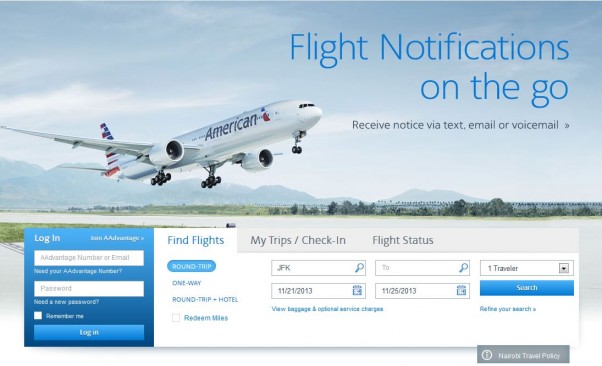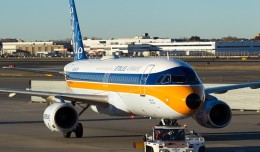“Web 2.0 describes web sites that use technology beyond the static pages of earlier web sites.” This is the definition of Web 2.0 according to Wikipedia. While there is no official definition of Web 2.0, it often involves a rich user experience, social interaction, and easier access to information. If one takes a journey to a few different airline websites, they will find dramatically different designs, features, and reliability. Culture also plays a big part in the design of an airline website, as they attempt to cater to their target audience and satisfy their expectations. Airlines are no newcomer to the internet, but has the design and utility of their websites kept up with the rest of the internet as it transforms to Web 2.0, and how do users feel about them?
On an airlines home page, users prefer a visually appealing experience, but with critical information presented front and center. Some airlines excel at this, while others are failing. For example, Delta’s recently launched home page combines a nice mix of high resolution graphics, critical information, and links to important functions. When first visiting the site, users are immediately greeted with their SkyMiles information on the “My Delta” tab, with other tabs offering booking, check in, flight status, and other pertinent information. When flight disruptions occur, news and information is presented without the user having to search. But are users happy with the functionality it provides?
When asked on Twitter, users had some interesting thoughts about the Delta site. “Delta’s my favorite. Very streamlined compared to others,” said Twitter user @apoure25. While Delta’s site may be visually appealing, other responses looked right past the slick design, and found fault with the site. User @dtwscott responded “It’s great… when it works,” with @philnickinson adding “Still slower than it used to be.”

The header of the United page isn’t lined up with the rest of the content, making for an awkward look
On the other end of the spectrum, visual design takes a back seat to functionality on the United site. Launching after the merger with Continental, the site looks positively ancient. Appearing cluttered with multiple boxes of varying sizes all over, a non-centered header, the United site sports a generally dated look. What the United site lacks in visual design, however, it makes up for in functionality (once you find what you are looking for). The flight status page displays critical information, such as inflight amenities, standby and upgrade lists, a real-time seat map, and even incoming aircraft information. While forfeiting design for functionality isn’t ideal, users just deal with it as best they can. “Most functional airline website out there. May not be prettiest, but it does the most, and that’s what counts for me,” said @stevensullivan. “Website is a terrible experience. It look me two hours to find what I wanted yesterday,” @anthonymarsh exclaimed.
Other airline sites, while sporting a pleasing visual design, employ other design aspects that drive users nuts. The Virgin America site provides important information right on the home page, and the functionality most users are looking for is readily available. One design aspect of Virgin America site does not sit well with @BLGranucci, however. “Any page where you have to trace a thin line to select a sub-option, like on Virgin America’s page.” At the top of the Virgin America site, hovering over text such as “manage travel” or “shop” brings up a drop-down menu. Much like playing the old game Operation, if your mouse cursor touches the edge, you lose. The drop-down menu disappears, and you have to try again. This is a frustrating example of a site which may actually be over designed.
The JetBlue home page is also very clean and functional, and blends in hints of a Web 2.0 experience. JetBlue has social media information such as Twitter followers and YouTube views readily available, and even has a page dedicated to social interaction called “SoFly.” The JetBlue site has always been one of the most easy to use airline web sites around, and users do enjoy that.
Internationally, culture has a heavy hand in airline web site design. For instance, the ANA site seems to be on information overload, but that is simply indicative of Japanese culture. The seat selection on the ANA site is actually Flash based, and provides an incredibly detailed look at your potential seat. There is no guessing whether your business class window seat is really a window seat, or is staggered so it is closer to the aisle than the window. A picture of the aircraft type is also presented, along with feature locations such TV screens and bar corners.
While technically not Web 2.0, it is clear that some airlines pay more attention to the usability and design of their website than others, while at the same time catering to their typical demographics. There is still much work left to be done on some major airline sites to keep users pleased. If a user can’t quickly find what they need on an airline website to book a flight, another airline is just a click away.










